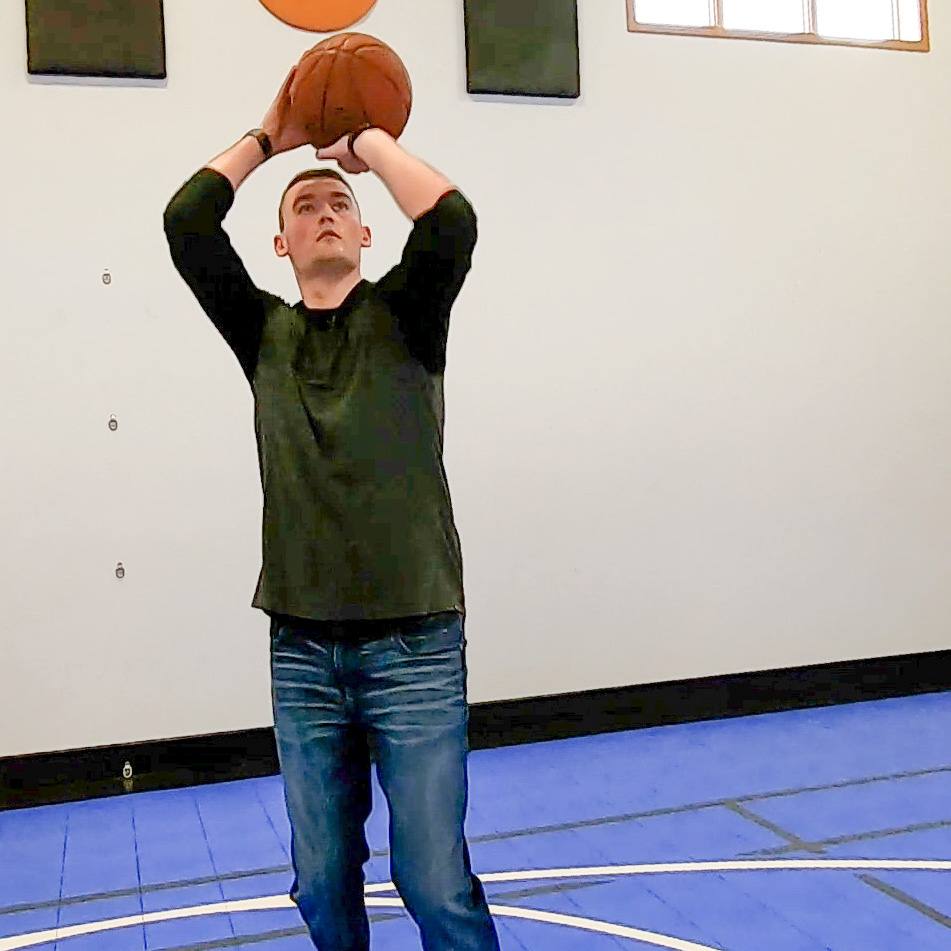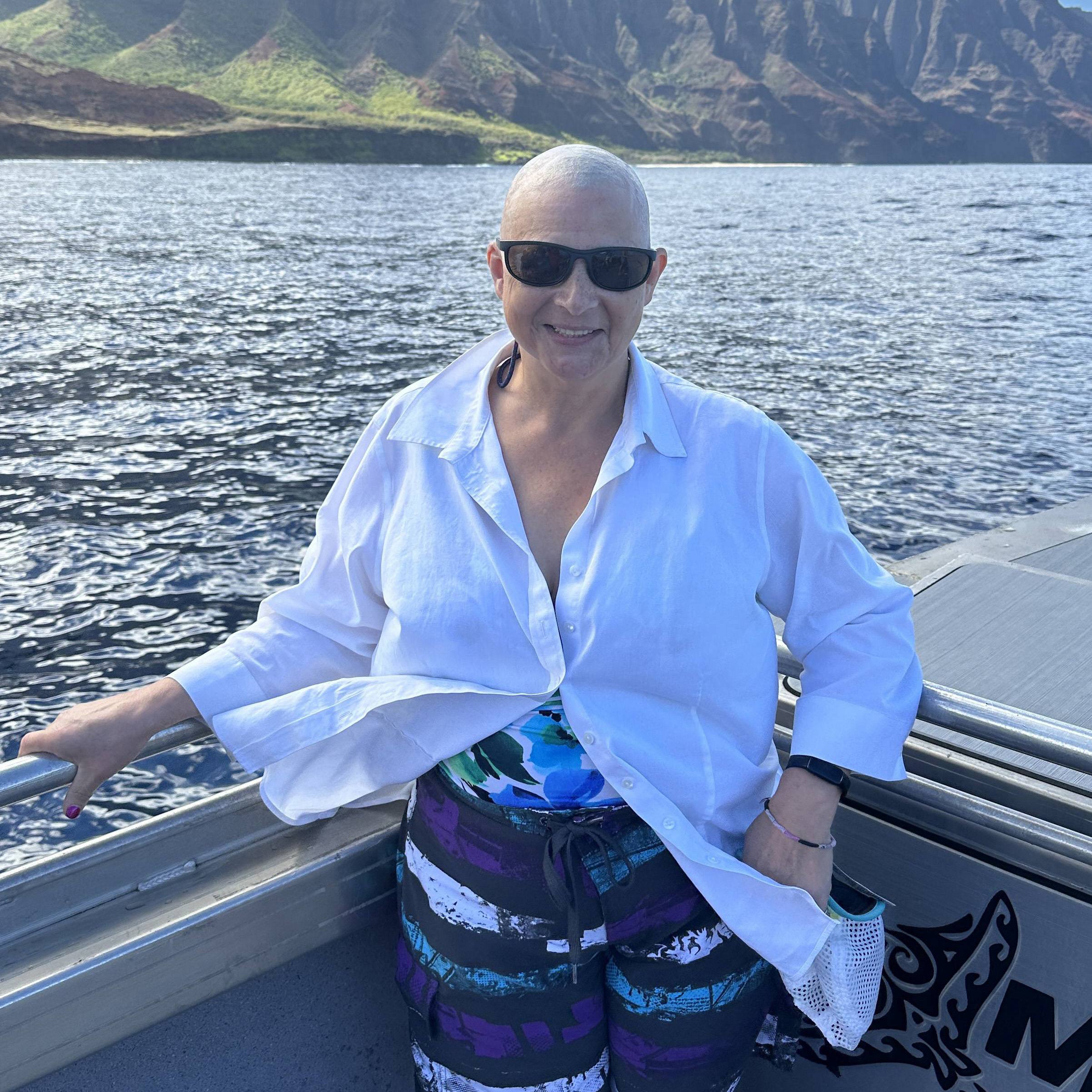
For years, the neurologic disorder trigeminal neuralgia dominated Ellen Whitebird's world. It caused searing pain that destroyed her ability to enjoy life. Then in 2019, a Mayo Clinic neurosurgeon proposed a procedure that he believed could make a significant difference. It did. Today, Ellen's pain is gone.
The past 24 years should have been some of the best of Ellen Whitebird's life. But unpredictable and debilitating facial pain stole that time from her, leaving the Arizona resident in constant fear of when it would strike next.
Ellen had a neurologic condition called trigeminal neuralgia. The disorder caused daily facial pain that was often excruciating. It could strike at any time, triggered by something as simple as a breeze or a smile. As a result, trying to avoid anything that might set off the pain dominated Ellen's life.
"It destroyed 24 years of my dreams and abilities," Ellen says. "It impacted how I was perceived in the workplace, limited my social life and made me a recluse."
Trigeminal neuralgia forced Ellen into despair, and though she fought against it, the condition drastically changed her life in the worst ways. She says that because of her pain, she was in a constant state of simply existing.
Suffering with no end in sight, in 2015, Ellen moved to Arizona from Oklahoma, where the wind and cold weather often triggered her symptoms. After a severe attack in 2019, Ellen turned to Mayo Clinic, where neurosurgeon Richard Zimmerman, M.D., offered her a treatment option that finally eliminated the pain and gave Ellen her life back.
Putting a name to the pain
Trigeminal neuralgia, also called tic douloureux, is a chronic condition that affects the trigeminal nerve, which carries sensation from the face to the brain. The disorder causes severe pain with any sort of stimulation to the face, be it a light breeze, chewing, talking, brushing teeth, applying makeup, shaving or even smiling.
"It's difficult to know the number of patients who have this condition because many providers don't recognize the pain as trigeminal neuralgia," Dr. Zimmerman says. "The knowledge gap is also problematic because even when the correct diagnosis is made, it is not widely known that several surgical options can help and even cure the condition."
Trigeminal neuralgia often is misdiagnosed, leading some patients to have teeth pulled or undergo root canals, only to find that the pain persists.
"I believe people have this condition and don't know it," Ellen says. "It's called the suicide disease because some people can't handle the unbearable pain any longer and take their life. They don't have the strength to carry on, which is extremely difficult, especially when no one believes you. I found the strength to carry on through my higher power, and I'm thankful."
Enduring unrelenting agony
For Ellen, the pain began on the right side of her jaw after she was involved in a car accident in 1995. Ellen says the pain resembled a toothache, and a family doctor sent her to a dentist. Over a course of months, Ellen had healthy teeth extracted in an effort to ease her discomfort, but the pain only worsened. After her move to Oklahoma — and many medical appointments and visits to the local hospital emergency department — her condition was identified as trigeminal neuralgia.
But the diagnosis didn't lead to effective treatment. Ellen spent years searching for answers and looking for ways to successfully treat the disorder, to no avail. The medications she was prescribed gave her no relief and negatively affected her health.
"I don't know how I survived all this pain, but I did it for the sake of my children because I love them so much."
Ellen Whitebird
At the time, Ellen felt that surgery and other procedures offered as treatment were too risky. The only thing that gave her temporary relief was acupuncture. She frequently took decongestions to reduce constant congestion in her sinuses, but those medications worsened her symptoms.
Arriving at a long-sought solution
Ellen faced many limitations as a result of trigeminal neuralgia. The unexpected strikes of pain made it impossible for her to continue her profession as a public health educator, and it put her out of a job. Her resources were quickly depleted, and she was deprived of many joys in life.
"Over the years, my suffering was continual and persistent. I was a single parent, and it was difficult without a support system," Ellen says. "I don't know how I survived all this pain, but I did it for the sake of my children because I love them so much."
One night while her family was visiting, Ellen had excruciating pain that lasted until the next morning, preventing her from sleeping. "It was like lightning strikes over and over and over and over, and it would not stop," she says. "I went to the bathroom and just held onto the door and stood there. Tears came to my eyes, but I could not go into a full cry mode because I did not want to create congestion in my sinuses. That it made it worse."
Upon finding out what had happened, her family took Ellen to Mayo Clinic the next morning. There she was admitted to the Emergency Department and referred to Dr. Zimmerman.
"The surgery to correct trigeminal neuralgia in most cases is a very simple procedure if you understand the right technique and how to address the problem the correct way."
Richard Zimmerman, M.D.
During an evaluation, Dr. Zimmerman discovered the underlying problem. A looped blood vessel was applying pressure to Ellen's trigeminal nerve. Fortunately, he knew how to fix it. He scheduled Ellen for a surgery known as microvascular decompression that would relieve the pressure on the nerve, eliminating the source of her pain.
"The surgery to correct trigeminal neuralgia in most cases is a very simple procedure if you understand the right technique and how to address the problem the correct way," Dr. Zimmerman said. "When Mrs. Whitebird had surgery, she went home the next day. This is not a very invasive procedure in that sense."
Living life unafraid
After 24 years of wearing scarves to protect her face, suffering from constant facial pain and living in fear of attacks that felt like lightning strikes, Ellen's quest for relief was finally over.
"I'm pain-free. Hallelujah!" Ellen says. "I just feel so blessed and so happy that I can live my life now without this fear, without this trigeminal neuralgia, without the excruciating pain that I was experiencing for so many years. It pretty much destroyed my way of life, and it's gone. I'm relieved it's gone, thanks to Dr. Richard Zimmerman — an amazing neurosurgeon, so compassionate, so kind and willing to help me."
Now that she's living life unafraid of something triggering the trigeminal neuralgia, Ellen can enjoy activities she used to avoid, such as having a conversation, eating dinner in an air-conditioned restaurant and going shopping.
"I'll always be grateful and thankful to Dr. Zimmerman. I honor him for his expertise, and his willingness to explore, research, learn and teach his knowledge," Ellen says. "He is a real blessing, and he's my hero."
Watch this video to learn more about the surgery Dr. Zimmerman performed to treat Ellen's trigeminal neuralgia:
HELPFUL LINKS
- Learn more about trigeminal neuralgia.
- Read about trigeminal neuralgia care at Mayo Clinic.
- Check out the Department of Neurosurgery.
- Join members on Mayo Clinic Connect discussing what it’s like to live with trigeminal neuralgia. Share your story with those who understand.
- Explore Mayo Clinic.
- Request an appointment.
Related Articles







